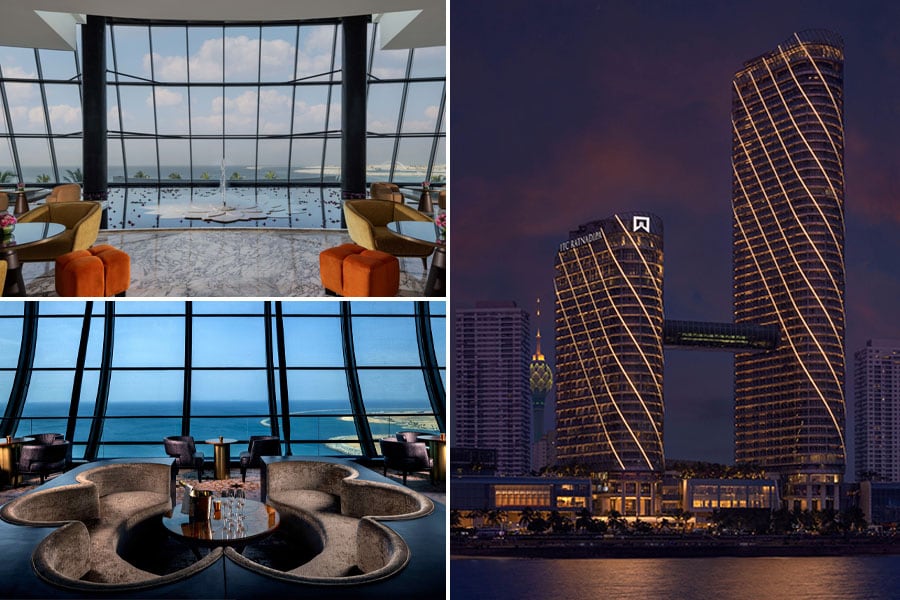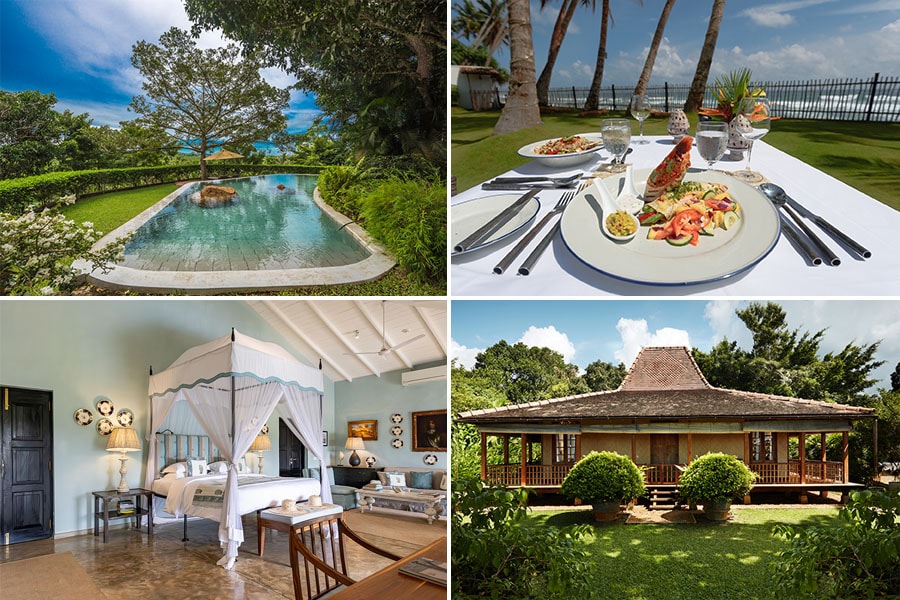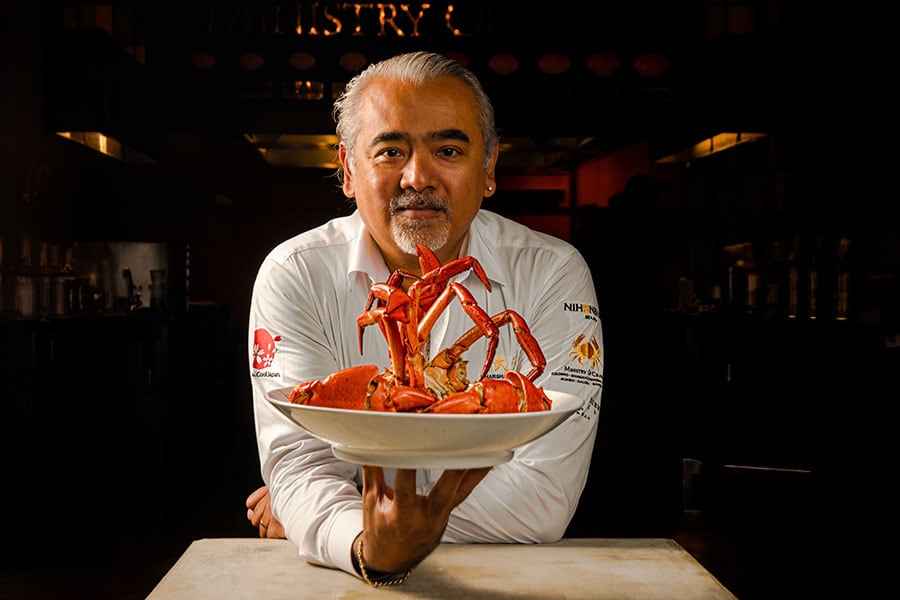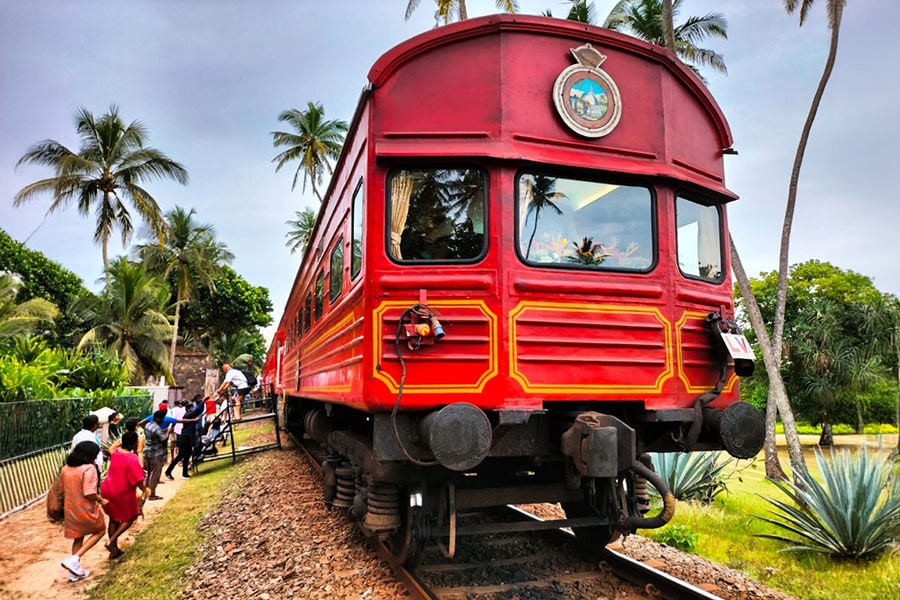
From budget beauty to a luxe Lanka
How Sri Lanka is transitioning to a luxury getaway, and how affluent Indians seeking rich cultural and culinary experiences are key to the pivot
 The newly opened ITC Ratnadipa in Colombo has stunning views of the Indian Ocean from its sky mansions, suites and bar, housed inside a glass bridge connecting the two towers.
The newly opened ITC Ratnadipa in Colombo has stunning views of the Indian Ocean from its sky mansions, suites and bar, housed inside a glass bridge connecting the two towers.
The newly opened ITC Ratnadipa in Colombo has stunning views of the Indian Ocean from its sky mansions, suites and bar, housed inside a glass bridge connecting the two towers.
The majestic blue of the Indian Ocean is the same hue as those flawless Ceylone sapphires. The sun’s not set yet. But as we sit contemplating the sea and the sky at Ahasa, an opulent bar inside an all-glass skybridge suspended 100 metres above the ground (it supposedly sways in the wind too, though we can’t feel the movement), sundowners are already doing the rounds.
Related stories
There’s barrel-aged arrack on the rocks, smooth and sophisticated. Or, you may settle for tropical cocktails, flavours lightened with latest techniques bartenders are wont to show off these days—milk clarification, coconut wash or such. Or, then again, you could ask for a cuvee champagne to be popped open, as you sink into a lavish couch facing the blue. A three-piece jazz band strikes up notes from The Games of Thrones title track, drowning out murmurs from neighbouring tables of what one assumes are Colombo socialites. It’s just another day in paradise.
Courting the Affluent Neighbour
Ahasa at the newly-opened ITC Ratnadipa, Sri Lanka’s biggest hotel and one of India’s most substantial investments on the island, is the latest “with it” bar and lounge in Colombo.
The hotel opened in April-end, inaugurated by no less than President Ranil Wickremesinge, who hoped that it would be the beginning of more investments by Indian hospitality companies. Sri Lanka has been recovering from its sovereign debt default crisis of 2022, and investments such as this are good news for an economy on the rebound and for which tourism is the mainstay. Local investors, too, are upping the ante by opening or reviving a smattering of exclusive hospitality ventures.
This June, as I travelled from Colombo to Galle, from Kandy to Bentota, there was a clear sense of this new resurgence. The backpacking crowd is thinner and, although local curry and rice meals and dhal vadas with Lion beer will never go out of fashion (hopefully), the emphasis is shifting to higher-paying, well-heeled guests not afraid to spend on unique stays and experiences.
“Sri Lanka has always had a fabulous cache of luxe and ultra-luxe properties, including the Jetwing ones (the Saman Villas on the southern coast are among the most romantic hotels in the world) and the heritage Cinnamon resorts and hotels,” points out Karan Gokani, co-founder and creative director of the famous UK-based restaurant chain Hoppers.
Gokani, author of the recent Hoppers: the cookbook (a tribute to Sri Lankan homes and streets) has been “obsessed” with the island since 2009, when he made Sri Lankan friends at Cambridge and has been coming here extensively since then. “Since the Easter bombings of 2019, then Covid and the economic crisis, the affluent tourists were alienated,” he says. “Sri Lanka was seen as a bit of risk and it was the budget crowd, more opportunistic, that started coming. But that notion has been dispelled now.”
 Designed by well-known British interior designer- turned- hotelier George Cooper, Kahanda Kanda and its sister hotel on the beach, are quirkily designed luxury boutique hotels offering a unique cultural insight into Galle and southern Sri Lanka.
Designed by well-known British interior designer- turned- hotelier George Cooper, Kahanda Kanda and its sister hotel on the beach, are quirkily designed luxury boutique hotels offering a unique cultural insight into Galle and southern Sri Lanka.
The Sri Lankan Tourism Promotion Bureau, post 2022, has been clear in its strategy of attracting “quality over quantity”. All through last year, plush features in international media have focussed not just on the pristine beaches but heritage tea trails and safaris, whale watching in the south, eco chic spas, gastronomy and even the Galle Lit Fest that had its best showing ever this January.
New hotels and boutique resorts are coming up or being resurrected with these experience seekers and high spenders in mind, who may also find incredible value too with the exchange rates vis-à-vis Lankan rupee and the pound or dollar or even the INR.
As the largest source market for inbound tourism, India is critical in this pivot, particularly as the Indian HNI becomes more important than ever globally as a high spender on luxe. This year, Sri Lanka is looking at 600,000 Indian tourist arrivals, aiming for its best-ever figures from its closest neighbour, buoyed by the growth in numbers over the last one year: This January, 34,399 Indians visited Sri Lanka, an increase of 2.5 times from January 2023. Interestingly, Maldives recorded a drop in the same period—from around 17,000 Indian tourists in January 2023 to 15000 in January 2024.
Also watch: Indians travelling to Sri Lanka can now make payments using UPI. Here's how
A Glass Skybridge, Spa in the Jungle
ITC reportedly invested $300 million in the prestigious Ratnadipa project—an engineering marvel in its own right—bang on Colombo’s poshest promenade facing the Indian Ocean. “ITC Ratnadipa Colombo is our inaugural international venture and a tribute to the rich heritage of Sri Lanka. This landmark hotel reinforces our plans to expand our portfolio and offer unparalleled experiences,” says Anil Chadha, chief executive, ITC Hotels.
With a stunning architecture comprising two glass towers facing the ocean, connected by a 55-meter-long and 300-tonne glass skybridge, amongst the most unique in the world, “sky mansions” or expansive suites with 180 panoramic views, a helipad, and nine restaurants and bars, Ratnadipa is hoping to be a magnet for the affluent leisure or business traveller from back home—as well as for the affluent local.
Then, there are other ultra-luxe ventures by Sri Lankan hospitality companies. Santani Wellness resort and spa, sprawled on an entire hill with a eucalyptus jungle, lies uphill from Kandy, about an hour and half hour’s drive. It is Sri Lanka’s first destination devoted to sustainable well-being.
Focussed on the Sri Lankan version of ayurveda, it embraces a local, sustainable, eco-chic approach with al fresco pavilions, custom made villas on stilts overlooking vast valleys and areas inspired by Buddhist meditation caves. It’s the “architecture of silence” that Time magazine recently voted as one of the “World’s 100 Places to Visit”.
What seekers of quiet luxury may expect is a focus on mental wellness. “We believe peace of mind is the ultimate luxury and Santani is the only property perhaps in the world that manifests this belief from design to delivery. We cater to luxury seekers who have every material good in the world but are still struggling,” says founder and CEO Vickum Nawagamuwage.
“Indian HNIs are one of our core market segments; with millions becoming HNIs on a regular basis, the demand for what we are offering is growing significantly as people start seeking self-actualisation after achieving material luxuries,” he adds.
While the Kandy resort came up in 2016—but has been making waves in the last one year— Nawagamuwage says that expansion is on the cards both within Sri Lanka and other destinations such as Oman, Saudi Arabia, Croatia and even India. The founders are seeking out investment partners—governments and private investors. Agreements with the government in Oman have been inked for projects with a development cost of $80 million, while those with Saudi authorities for projects worth $150 million are near closure.
The group is interested in India too and is scouting for partners—as well as customers. Popups are being planned for September, for instance, in Delhi and Mumbai to bring Santani’s healthy modern Sri Lankan food designed by resident chef Asanka Indika Bandara to India. With hyperlocal ingredients—nettles, drumsticks, fatty Japanese grade tuna (a major Sri Lankan export)—Bandara’s tasting menu can rival the offerings of any Michelin-starred restaurant. Becoming the first wellness restaurant to be on one of these global “best” lists is an ambition the chef is pursuing, he tells me as we fork up some tuna on toast.
 Ministry of Crab founder and father of modern Sri Lankan gastronomy, Dharshan Munidasa says the pandemic was a turning point for chef led restaurants and Sri Lanka is on its way to becoming the premier gourmet destination of southern Indian Ocean.
Ministry of Crab founder and father of modern Sri Lankan gastronomy, Dharshan Munidasa says the pandemic was a turning point for chef led restaurants and Sri Lanka is on its way to becoming the premier gourmet destination of southern Indian Ocean.
The Rise of Modern Sri Lankan Food
Sri Lankan food with its fiery curries, magnificent sambols and plump hoppers has long been a darling of spice seekers. Its popularity has become more mainstreamed in the last few years, particularly in the UK, with its colonial connection, along with that of regional Indian cuisines, as Gen Z seeks more authenticity.
In the island nation itself, just two restaurants feature on the prestigious Asia’s 50 Best List —even though Sri Lankan catch such as blue swimmer crabs and blue fin tuna are among the most sought-after in top dining destinations such as Singapore (the Singapore Chilli crab is actually Sri Lankan) and Japan (for sashimi).
Speak to the locals and you realise that despite the abundance of flora, fauna and seafood, much of the food in Sri Lanka has been traditionally imported, including onions in the pol sambol (from Pakistan and India).
Post the economic crisis, a new awareness seems to be on the rise. Chefs who have started small businesses of their own are contemporising local and hyperlocal flavours and ingredients. Modern Sri Lankan gastronomy seems to be at the cusp of a rise much like modern Indian had in 2008-09.
The father of Sri Lanka’s modern culinary culture and one of the top chefs in Asia, chef Dharshan Munidasa, who has just opened an outlet of his Ministry of Crab in Singapore, says Sri Lankan food is finding more global recognition with a revival in tourism. There is an interest in spices but also in nuances of cooking such as the influence of katsuobushi (dried bonito, typically imported from Maldives) in the humble pol sambol. “Being half Sri Lankan and half Japanese, I am proud to note the interest in both my culinary heritages,” Munidasa says, as he traces the idea of umami in Sri Lankan food.
Munidasa also notes that upscale restaurant dining in Colombo, Galle and other areas has changed with the emergence of many independent chefs and chef-restaurateurs running their small establishments and cooking with the produce of the land.
“This was partly driven by home chefs during the pandemic. It is amazing to see restaurant owners now cook in their own kitchens. Before this, hotels and large restaurant companies merely employed chefs. Right now, we are seeing many self-employed chefs doing amazing things with the cuisine,” adds Munidasa. “There is nothing between here and the South Pole. Given our rich harvest from the ocean, we will become THE culinary destination of the south Indian ocean.”
 At the heritage Villa Bentota, once a home to Sri Lanka's star architect Geoffrey Bawa, a stunning experience can be chartering a rail carriage, or entire train, to chug up to the property, with apperitifs from a beach bar by the tracks.
At the heritage Villa Bentota, once a home to Sri Lanka's star architect Geoffrey Bawa, a stunning experience can be chartering a rail carriage, or entire train, to chug up to the property, with apperitifs from a beach bar by the tracks.
Private Train to the Beach Bar!
At the stunningly-designed Kahanda Kanda boutique resort set on its own mountain inside an organic tea estate off Galle, Shamila Philips, marketing director of KK resorts that owns the property, is sitting down with chefs to design a tea-infused degustation menu for her guests.
Designed by the acclaimed British designer-turned-hotelier George Cooper, with 12 quirkily laid-out villas, many with private pools and/or mini libraries, lotus pools and expansive views of a tropical jungle, Kahanda Kanda near the Kogalla Lake off Galle is an experience in its own right.
But Philips says that experiences centred around food and local heritage are important because “in the post-Covid world, with demand for exclusivity and growing multi-generational family travel, it is important to give more than a nice bed and pretty surroundings.”
Apart from the tea-infused menu that we dine on—the likes of black tea and cardamom infused prawn bisque, yellow fin tuna crusted with chilli coconut in a green tea dressing and passion fruit parfait with Earl Grey mousse—there’s also a cinnamon trail to be discovered on a neighbouring island accessed by a boat. And then, Philips and her team are delving into the esoteric mask culture of southern Sri Lanka, where masks were regarded as totems, and mask making is a specialised though disappearing legacy-profession.
The visit to a traditional mask-maker is going to be part of an exclusive experience designed for a group of eight couples—NRI Indians—checking into the property to celebrate a 40th birthday. They’ve bought out the entire resort and have planned a sort of a treasure hunt as a birthday game that involves visiting the local wet market, cinnamon factory and mask maker!
In Bentota, The Villa Bentota, a heritage property dating back to the 1880s reopened in 2021 (it was the home of Sri Lanka’s most famous architect Geoffery Bawa and is one of Sri Lanka’s most historic places). It is a coveted stay, not in the least for its Mohotti suite with its antique furniture, and a sunken sitting room. One truly unique experience is chartering a rail saloon, or an entire train, to arrive at the beachside hotel directly from Colombo.
A rail line runs through the property and separates the villas from the beach—with its own beach bar and private dining area under a canopy of trees. Last year, a wedding group from Australia had booked an entire train to arrive here, and as the train chugged in, they were welcomed with drinks from the beach bar by the tracks.
Highfliers, and high chuggers aside, the showy destination Indian wedding may just have found its next destination.

















